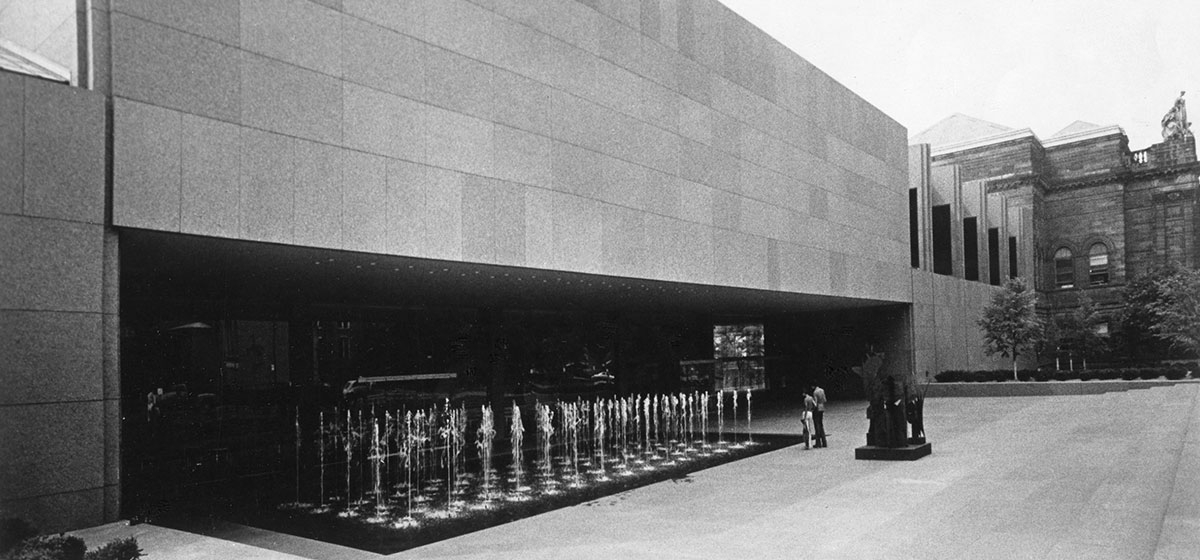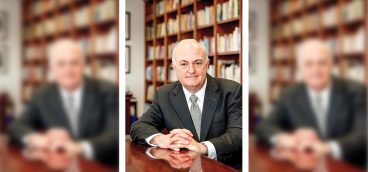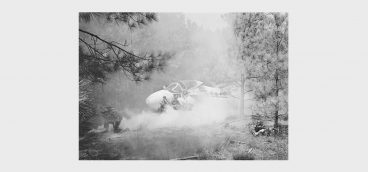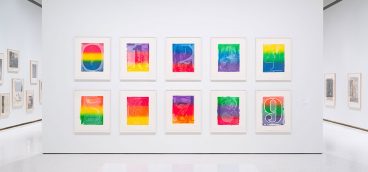
Leon Arkus was the fifth director (1968–80) of the Carnegie Museum of Art during its most transformational phase since the building of the museum in the late 19th century. The Scaife Wing and the Heinz Galleries came into being under his supervision, allowing The Carnegie to function as a contemporary museum of art as never before, and its schematics have survived little altered to the present day. Perhaps more important, he won the confidence of Sarah Mellon Scaife, whose patronage enabled the acquisition of a core group of 20th-century paintings that edged the standing of the museum toward the fore.
Both of these factors depended on a single, often derided, charism—the “eye,” a feeling for the aesthetics of space and an intuitive feeling for a great (not merely good) painting. At his death I surmised he was likely to be the last “purely intuitive” director, and, indeed, he has since been succeeded by those burdened with qualifications and experience.
It’s a point I am happy to labor, for during his time in Pittsburgh he was to engage with other intuitives, collectors to a man, most notably Charles A. Rosenbloom and G. David Thompson, all formally untrained but with excellent eyes, on which they depended, unmediated by personal curators and expert consultants.
A new book, carefully and loyally compiled by Arkus’s widow, does not shy away from the controversies that have beset the museum. Trustees and philanthropists have their shady sides, even now, and boards habitually strive to conceal their defects. Leon Arkus was privy to much and, in his notes, is candid enough to make this book something of a revelation without scandal-mongering. As a Jew, and the museum’s first Jewish director, he was sensitive to the marginalization that came with that fact; the memoirs document the gradual transformation that was to come about, aided by a group of more progressively minded establishment figures.
He makes his points by anecdote, which is more effective than by principled exhortation, and brings to life the other vivid characters in his story. His wife puts it succinctly on the title pages: “promoter—and passionate champion of worthy causes, won and lost.” It could be said that he was no great friend of Carnegie International and sought to modify its structure. That might have been a battle lost, but the newer Internationals bear little resemblance to those he first encountered.
Arkus’s life was more a product of chance than destiny, and the first two thirds of the book give little indication of what his professional fulfillment was to be. I read the book in quite the wrong way, scouring the pages toward the end for the Pittsburgh story—to confirm my sense of this often-gruff man as determined, principled and essentially good. The first part of the book, read later, came as a revelation, a series of short gobbets of a multifaceted life lived: in New York, on the margins of the art trade; as a decorated war veteran; and as an engineer, radio station manager and documentary photographer in, of all places, Iran.
The process by which he came to possess that extraordinary eye is elusive; Arkus explicitly states that he could not explain it. Yet it seems that it came through the friendly mentorship of Stephan Bourgeois, a gentleman-dealer with perhaps the gift of imparting that special insight. Frustratingly, that is all.
Best of all, he seems to question that old chestnut about Andrew Carnegie, the creator of the Institute and its dependent, the Museum of Art, who pontificated that his museum should “collect the Old Masters of tomorrow” (a promotional gust of hot air). This book suggests that Arkus didn’t like the sanctimonious Scot and suspected his motives: “I find [in him] only lip service to the arts. Everything points to a man primarily motivated by the need to promote himself—perhaps to wipe out the demons of humiliation as a poverty-stricken youth in Scotland” (or to atone for his practices in industry?). Clearly Leon Arkus was an independent mind. Dis manibus.





